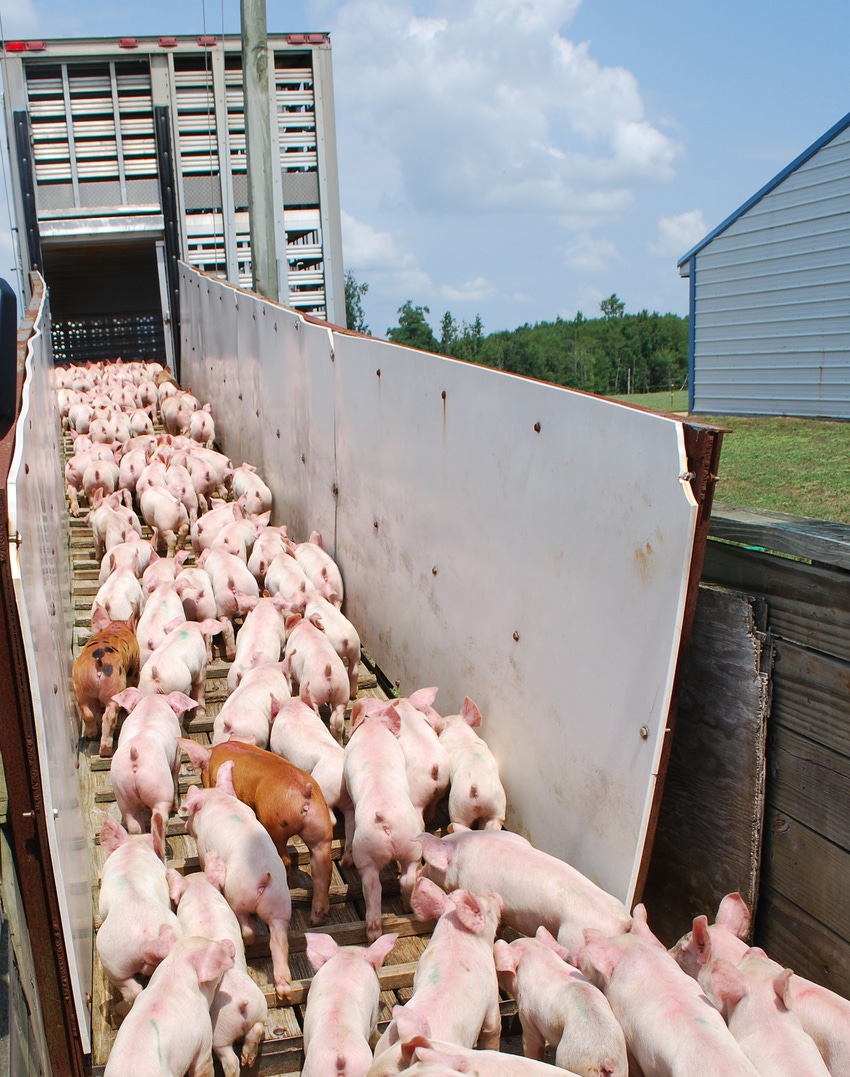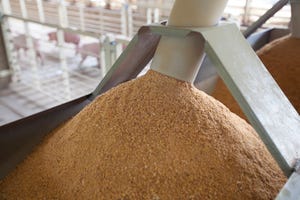Open communication with state animal health officials is critical to the continuity of business and getting animals moving during a foreign animal disease outbreak.
June 18, 2019

By Heidi Carroll, South Dakota State University Extension Field Specialist-Livestock Stewardship
African swine fever and preparing for foreign animal disease outbreaks is forefront in people’s minds. National Hog Farmer editor Ann Hess provided a great overview of the open communication needed between producers and state animal health officials for an FAD outbreak in, “Sharing your Secure Pork Supply.” Please contact your state animal health official for guidance on participating in the Secure Pork Supply Plan. In this article, let’s take a closer look at the critical steps in developing a personalized Secure Pork Supply Plan for Continuity of Business with your state animal health officials.
The goal of the SPS Plan is to provide a workable business continuity plan for pork premises with no evidence of the FAD infection located in a regulatory control area that is credible to responsible regulatory officials. Having the SPS Plan implemented prior to an FAD outbreak enhances coordination and communication between all stakeholders to allow safe animal or semen movement following a stop movement action.
Understand the SPS plan
The first step is familiarize yourself with the SPS Plan for Continuity of Business. Participation is voluntary. Review the summaries and handouts to get a brief overview of the expectations of participation. Then dive deeper into overview webinars and the individual topics that make up the SPS plan. Many of the materials and forms are readily available and can be customized to your individual operation.
Request and verify PINs
The second step is to request and verify a National Premises Identification Number. State animal health officials can work with you to get a PIN. In South Dakota, contact Todd Tedrow at the South Dakota Animal Industry Board, 605-773-3321. Having a PIN facilitates the process of requesting movement permits during an outbreak. Additionally, consider putting your PIN on samples submitted for surveillance or diagnosis that may speed up disease responses. Validating a PIN means reviewing that a valid 911 address and matching coordinates (longitude and latitude) reflect the actual location of the animals at the premises. The following steps allow you to complete the validation process.
Open Google maps, Bing maps, or other mapping app or website.
Enter the site address; if it is a new site, obtain a 911 address from the county. The S.D. AIB encourages producers to register a single premises per business account unless multiple premises are operated as distinctly separate entities at different locations.
Select “Aerial/Satellite” image.
If the site location is correct, continue. If not, find the site on the map.
Put cursor on site at driveway; right click on the site.
Record latitude and longitude.
If you find discrepancies between the GPS location and address, call the S.D. AIB to notify of changes to be updated in the database.
Required records
During a FAD outbreak, state animal health officials must be able to easily conduct an epidemiological investigation. Review the SPS plan for a list of the records, logbooks and standard operating procedures that make up your enhanced biosecurity plan. Reach out to your state’s animal health officials to verify their required list of documents and records and the process of submitting a completed SPS plan. Download or review record templates that are available to use a common format for communicating the necessary pieces of information during an FAD outbreak.
Enhanced biosecurity plan and premises map
Creating an individualized enhanced biosecurity plan and premises map is the next step. After doing the PIN validation steps as described above, you can create a copy of the aerial map.
Identify your site on your internet map.
Select “Aerial/Satellite” image.
Zoom in to view entire site on the screen.
Open a Word document or the “SPS_BiosecurityTemplate” available at SecurePork.org. Select “Insert,” “Screenshot,” then “Screen clipping.” In the web browser with the map, select the area of the screen/map to copy with mouse (+ on frosted area).
Save the Word document after inserting the aerial map.
Label the map with the following items and include a legend within the enhanced biosecurity plan document. These items can be labeled using Word shapes, arrows and line features or by drawing by hand on a printed copy of a map using markers or colored pencils.

Checklists exist to evaluate your current biosecurity practices and can be found under the Pork Producers-Biosecurity tab. Templates of the required forms and enhanced biosecurity plan can be downloaded and revised to meet producer needs.
Employee training
Employee training resources are available to compliment your implementation efforts. Train all individuals on the clinical signs and lesions associated with the FADs of swine. Everyone should understand the steps to take if a FAD is suspected. Posters of swine FADs can be ordered from the Pork Store. Work closely with a licensed veterinarian to develop and review your enhanced biosecurity plan and determine a plan of engaging employees on its implementation.
Enroll plan in your state
Once an SPS plan is created for a site, the last and most important step is enrolling with state animal health officials. Each state has their own enrollment process in place. In South Dakota, have a licensed, accredited veterinarian complete the “Self-Assessment Checklist for Enhanced Pork Production Biosecurity: Animals Raised Indoors” and Secure Food Supply Plan Participant Enrollment Form. Both of these documents are submitted to the S.D. AIB to complete the enrollment process in South Dakota. Producers with sites in multiple states, or who require moving animals or semen to other states for business, should contact state animal health officials in all states involved.
Remember open communication with state animal health officials is critical to the continuity of business and getting animals moving during an outbreak. Start the conversation and write an SPS plan today.
Resources
Secure Pork Supply Plan. 2019. SPS Plan for Continuity of Business.
Secure Pork Supply Plan. 2019. Creating a Premises Map for a Biosecurity Plan.
South Dakota Animal Industry Board. April 22, 2019. “Secure Pork Supply Plan: Steps to Participate”.
Source: Heidi Carroll, South Dakota State University Extension, who is solely responsible for the information provided, and wholly owns the information. Informa Business Media and all its subsidiaries are not responsible for any of the content contained in this information asset.
You May Also Like



